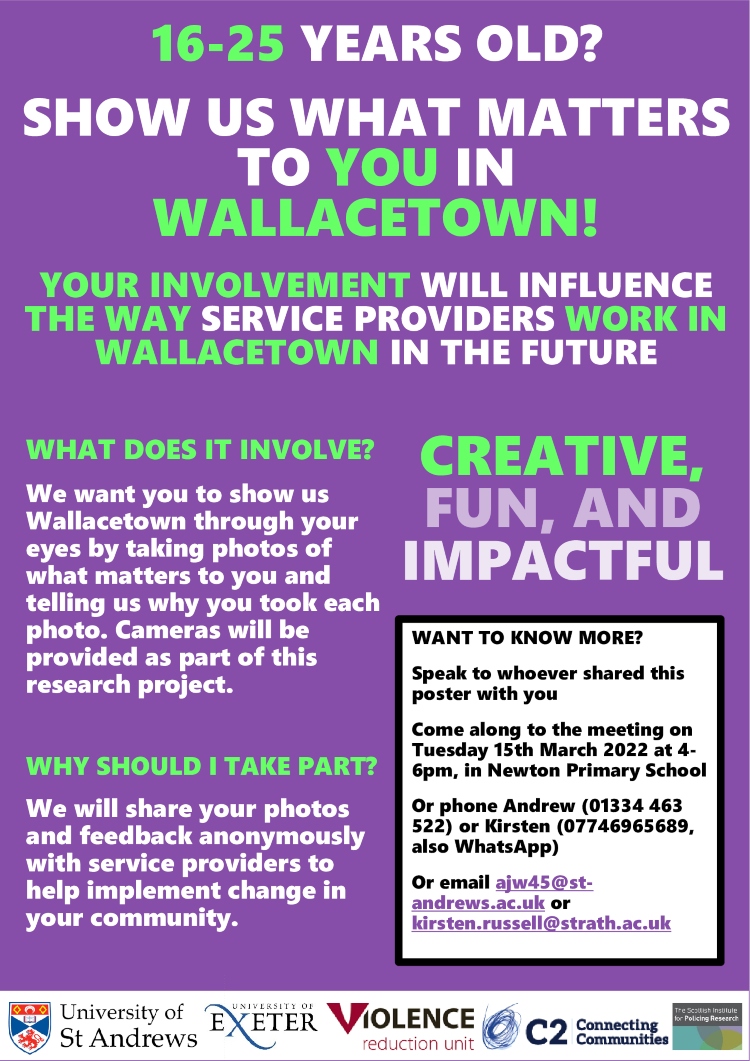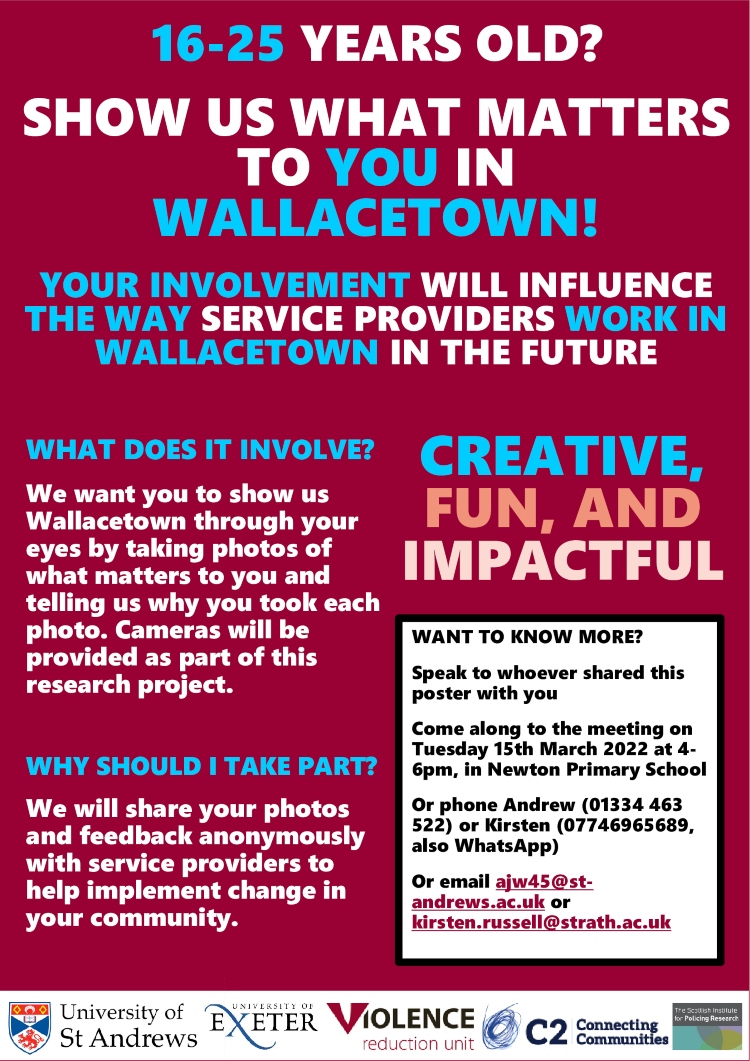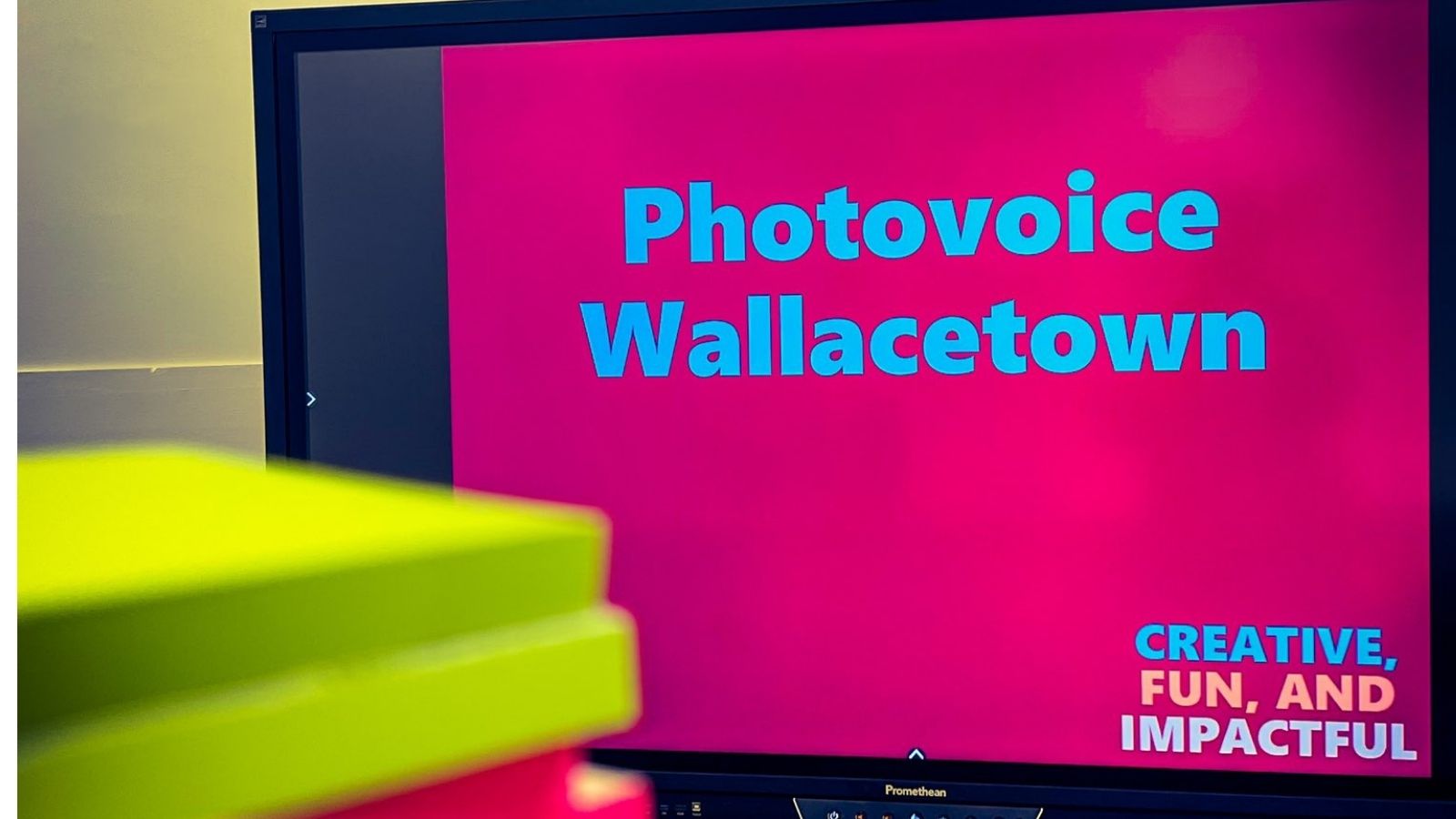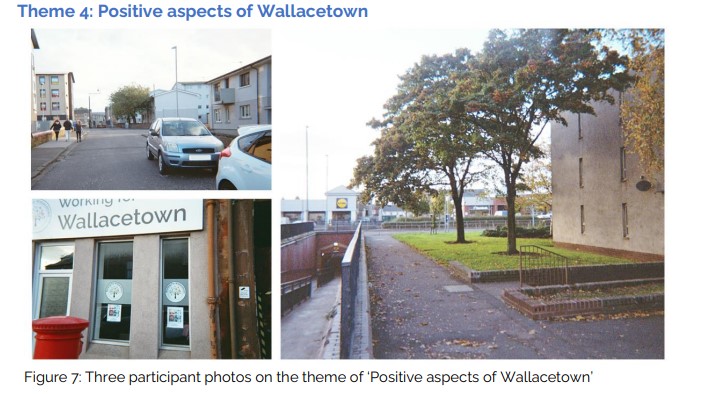Photovoice asks young people to reflect their community in photographs. We chatted to Andrew Williams of the University of St Andrews, who is part of the research team helping with Photovoice in Wallacetown.
What is Photovoice?
Photovoice is a research method where we ask people to take photos related to a specific topic. We then chat through the photos to help us understand why each photo was taken before organising the photos into an exhibition and research paper. Photovoice is called a participatory research method as the people participating in the project help shape and direct the project.
Has the idea of Photovoice been in other places?
Yes, Photovoice has been used across the world on a wide variety of topics from transport and fast food, to substance abuse and the availability of alcohol. An organisation called Rutgers uses photovoice in low- and middle-income countries to promote sexual and reproductive health.

You’re part of the group helping organise it in Wallacetown, why should people take part and how do they get involved?
People should take part because the project will be fun and creative, we are providing the cameras so you don’t need one already. The photos taken will become a lasting record of your experience in Wallacetown. We will work together to show the photos to policy makers and other people and organisations in Wallacetown to help shape your community. The current project wants people living in Wallacetown aged 16-25 years old to participate.
How does it help connecting with people and place?
Photovoice is known for enabling people to document and reflect on their community, both the positive and negative. As we hope to do in Wallacetown the people who take the photos can write a caption to accompany each photo. Doing this means that anyone seeing the photos will see Wallacetown how you see it, making your opinions heard.

How does Photovoice get taken on by people so they can turn it into their own thing?
An important principle of Photovoice is that the photos are owned by the people taking them. We will need your consent to use any photo you take in the exhibition or research paper.
It is completely up to you what you photograph but we would like to know why you chose to photograph that particular person or place.
Although this is a research project we are here to work with you and help display the photos in ways that are meaningful to you; we are interested in understanding whether Photovoice is a good tool to capture what young people think and feel about Wallacetown.
Thanks, let us know how it goes!
Photovoice in Wallacetown is supported by the University of St Andrews, University of Exeter, the Violence Reduction Unit, Scottish Institute for Policing Research and C2.




